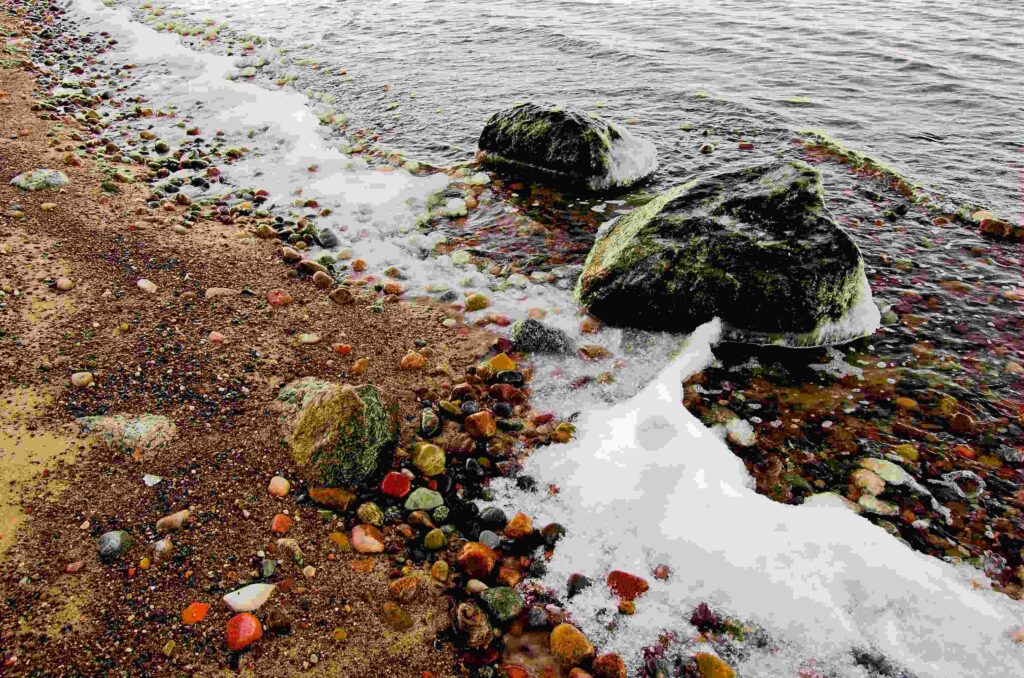Synthetic ‘rocks’ from microplastics threaten ocean well being

Outline of the Article
- Introduction to synthetic ‘rocks’ made from microplastics
- Understanding the impact of microplastics on ocean well-being
- The process of formation of synthetic ‘rocks’
- Distribution of synthetic ‘rocks’ in the ocean
- Environmental consequences of synthetic ‘rocks’
- Threats posed by synthetic ‘rocks’ to marine life
- Challenges in mitigating the issue of synthetic ‘rocks’
- Current efforts and initiatives to address microplastic pollution
- Innovations and technologies for microplastic removal from the oceans
- Importance of global collaboration in combating microplastic pollution
- The role of individuals in reducing microplastic contamination
- Future prospects and strategies for ocean conservation
- Conclusion
Synthetic ‘Rocks’ from Microplastics Threaten Ocean Well-being
Microplastics, minuscule pieces of plastic less than 5 millimeters in size, have become ubiquitous in our oceans, posing a significant threat to marine ecosystems. Among the myriad concerns associated with microplastics, the emergence of synthetic ‘rocks’ composed of these particles presents a particularly alarming scenario for ocean well-being.
Understanding the Impact of Microplastics on Ocean Well-being
Before delving into synthetic ‘rocks,’ it’s crucial to grasp the detrimental effects of microplastics on the marine environment. These tiny fragments, originating from various sources such as cosmetics, clothing, and industrial processes, accumulate in oceans globally, contaminating water bodies and endangering marine life.
The Process of Formation of Synthetic ‘Rocks’
Synthetic ‘rocks’ are formed through a complex process wherein microplastics aggregate and solidify, resembling natural rocks in appearance. This aggregation typically occurs due to the interaction of microplastics with other substances like sediment, organic matter, and minerals present in the ocean.
Distribution of Synthetic ‘Rocks’ in the Ocean
Synthetic ‘rocks’ are dispersed across oceanic regions, propelled by ocean currents and wind patterns. They can be found on coastlines, seabeds, and even in the water column, infiltrating diverse marine habitats from shallow coastal areas to the deep sea.
Environmental Consequences of Synthetic ‘Rocks’
The proliferation of synthetic ‘rocks’ exacerbates the already dire consequences of microplastic pollution. These artificial formations alter marine ecosystems, affecting biodiversity, nutrient cycling, and the health of marine organisms. Moreover, they serve as vectors for the transportation of harmful pollutants, further contaminating the marine environment.
Threats Posed by Synthetic ‘Rocks’ to Marine Life
Marine organisms face numerous threats from synthetic ‘rocks,’ including ingestion, entanglement, and habitat degradation. Species ranging from plankton to apex predators are susceptible to the adverse effects of microplastics, leading to physiological harm, reproductive issues, and population declines.
Challenges in Mitigating the Issue of Synthetic ‘Rocks’
Addressing the challenge of synthetic ‘rocks’ requires overcoming significant obstacles, including limited understanding of their dynamics, logistical constraints in monitoring and removal efforts, and the sheer magnitude of microplastic contamination in the oceans.
Current Efforts and Initiatives to Address Microplastic Pollution
Despite the complexities involved, various organizations, governments, and researchers are actively engaged in combatting microplastic pollution. Initiatives focus on research, policy development, public awareness campaigns, and technological innovations aimed at reducing microplastic emissions and mitigating their impacts on marine ecosystems.
Innovations and Technologies for Microplastic Removal from the Oceans
Innovative technologies such as drones, autonomous underwater vehicles, and filtration systems hold promise for removing microplastics from the oceans. These advancements, coupled with collaborative research efforts, offer hope for effective mitigation strategies in the future.
Importance of Global Collaboration in Combating Microplastic Pollution
Given the transboundary nature of ocean pollution, international cooperation is essential in addressing the root causes of microplastic contamination. Collective action, coordinated policies, and sharing of best practices can facilitate meaningful progress towards restoring ocean health.
The Role of Individuals in Reducing Microplastic Contamination
Individuals play a pivotal role in mitigating microplastic pollution through mindful consumption, waste reduction, and advocacy for sustainable practices. By making conscious choices and advocating for systemic change, every individual can contribute to safeguarding the oceans for future generations.
Future Prospects and Strategies for Ocean Conservation
Looking ahead, a multi-faceted approach encompassing scientific research, policy interventions, technological innovations, and community engagement is necessary to tackle the menace of microplastic pollution and preserve the integrity of marine ecosystems.
Conclusion
Synthetic ‘rocks’ derived from microplastics represent a grave threat to ocean well-being, exacerbating the pervasive issue of marine plastic pollution. Addressing this challenge requires concerted efforts at global, regional, and individual levels to mitigate microplastic contamination, protect marine biodiversity, and ensure the sustainability of our oceans for generations to come.
FAQs
- What are synthetic ‘rocks’ made from? Synthetic ‘rocks’ are composed of aggregated microplastics, which are tiny plastic particles less than 5 millimeters in size.
- How do synthetic ‘rocks’ affect marine life? Synthetic ‘rocks’ pose various threats to marine life, including ingestion, entanglement, habitat degradation, and the transportation of harmful pollutants.
- What are some challenges in addressing microplastic pollution? Challenges include limited understanding of synthetic ‘rocks’ dynamics, logistical constraints in monitoring and removal efforts, and the sheer magnitude of microplastic contamination in the oceans.
- What role do individuals play in reducing microplastic contamination? Individuals can contribute to mitigating microplastic pollution through mindful consumption, waste reduction, and advocacy for sustainable practices.
- What are some future prospects for ocean conservation? Future prospects include advancements in technology, policy interventions, and community engagement efforts aimed at preserving marine ecosystems and reducing plastic pollution.
For more related information, visit the link below
